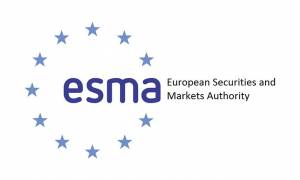The European Securities and Markets Authority (ESMA) recently announced a series of regulations and restrictions for CFD and Binary Options providers. These ESMA regulations have created waves within the industry, some have welcomed the new regulations with open arms, others have been foreboding. TFG investigates the impact of these regulations on currency providers.
The European Securities and Markets Authority – What Happened
Forex.com in fact called the measure an attempt by government bureaucrats to nanny the forex industry – under the guise of protecting the “little people” that don’t know what is good for them. They also likened the move to the strangulation of the Forex industry by the CFTC in the US.
Before we buy into the doom and gloom, first let’s take a look at what ESMA is, what regulations ESMA is recommending, what types of financials products and industries it affects and what all of this will mean to retail traders.

What is ESMA?
ESMA is the European Securities and Markets Authority, which according to their website is an independent authority with jurisdiction within the EU with the mission to ensure the stability of the EU’s financial system. This includes protecting investors – which is relative to our conversation. It was founded in 2011 as a response to the de Larosiere report that called for a decentralized network of European Financial Supervision. ESMA replaced the Committee of European Securities Regulators (CESR) – a network of European Union authorities that ensured consistent supervision across the EU and held an advisory role for the European Commission.
This function – of investor protection – elaborates into assessing risk to investors and markets.
ESMA although an independent authority is still accountable to the European Parliament and reports to the Economic and Monetary Affairs Committee (ECON) – upon request of a formal meaning. It is also accountable to the EU’s Council and EU’s Commission. Their activities are not only reported to these bodies but also in an annual report.
ESMA has four primary functions:
- Assessing risk to financial stability, markets and of course investors.
- Compiling and creating an all-encompassing rulebook for European Union financial markets.
- Coalition of economic supervision.
- Direct supervision of specific entities within the financial industry.
It also holds a direct supervisory role of Trade Repositories and Ratings Agencies. Both of these agencies are crucial to the European Union’s market infrastructure.
What are the ESMA Regulations?
The latest ESMA regulations largely focus on Binary Options and CFD trading (both regulated and unregulated) within the EU. First let’s take a look at what binary options and CFDs are.
ESMA Binary Options Regulations
Also known as an assets-or-nothing option. It offers a fixed compensation when the option is “in the money” upon expiry or nothing at all if it expires “out of the money”. Another distinction is that this type of option is automatically exercised, meaning the investor doesn’t have a buy or sell choice on the underlying asset when the contract expires. This type of trading became extremely popular due to its simplicity – a basic “Yes” or “No” choice was made to commit the trade.
What are CFDs?
Known as contracts for difference – it is in basics, a contract between broker and client – which exchanges the difference between the price at the beginning of the contract and the price at its end – and it is fulfilled in physical funds. The biggest appeal of these instruments are the ability to use leverage – which coincidentally is what ESMA is trying to reduce significantly with the new regulations. Leverage increases a position’s exposure to the markets. What does this mean? Essentially a 1:10 leverage (it can also be seen as 10:1) trade means that 50 USD can buy 500 USD worth of an instrument. The problem is that a smaller fluctuation of the market can cause losses – leverage is a ratio and it works both ways. Ultimately, it’s a tool for sophisticated traders that can undeniably lead to losses when used irresponsibly. Any tool that’s abused can lead to damages. This is actually the largest point of contention for the new regulations by traders. They believe that the unwarranted restriction of the CFD industry under the premise of protecting traders from themselves is unfair and undermines these same traders’ intellect.
The Repercussions of the ESMA CFD Regulations
The ESMA CFD regulations will definitely have an impact on retail traders – as they are usually the ones that trade with higher level of leverage. Institutional clients typically avoid using high leverage (they generally use lower leverage to avoid volatility). The distinction is significant too because some brokers were offering upwards of a 100:1 leverage on certain instruments – that is capped at 30:1 for FX. That means 5 USD with a 200:1 leverage applied would have a value of 1000 USD – whereas after the regulations activate these will be worth 150 USD.
This is where the benefit to the trader comes in, even though the draconian restriction of leverage seem less than optimal at the moment. Predatory brokers that profit from their clients’ losses, will have a much more difficult time doing so after the regulations. This should clear the industry of less than transparent and exploitive brokers. Which is ultimately what the regulations sought to achieve. So in that sense hypothetical mission accomplished ESMA.
What type of broker will be hit the hardest?
Many people are pointing towards Market Maker brokers being the biggest losers of the new regulations, because a predominate misconception exists that market makers gain from their clients’ loses. Market makers in fact make money from spreads – the difference between that “ask” and “bid” price or the market price and the price offered to the trader or client by the broker. This is why you will see certain variable spread Market Markers increase their spreads during volatility as they take on more risk and convey that to their clients. Ultimately no matter what the type of broker it be a Market Marker or STP, the primary repercussion will be a loss of retail level traders, that use high leverage or trade with less capital. STP brokers, Straight Through Processing Brokers – also known within the industry as Non Dealing Desk Brokers, generally display their own quotes like Market Maker brokers and are in fact Market Makers but selectively. STP brokers will route successful orders to market but act as a Market Maker when a position/trade is in loss. This mitigates the company’s risk as it is not obligated to shoulder their clients’ winnings, but still profiting from their clients’ losses. Although this sounds nefarious, it only becomes so when the broker intervenes to increase the chances of a loss – which could cost a broker their reputation or even worse their license.
This move in the long run might actually benefit all brokers – as a lot of the industry’s bad reputation comes not only from some predatory practices but largely stems from retail traders trading irresponsibly, either without being knowledgeable enough to trade, or using excessive amounts of leverage to “cash in” big – but usually end up decimating their accounts and funds.
As it stands although the ESMA regulations have their opponents, it seems that well established veterans of the CFD and Forex industry are welcoming them with open arms. Some have even started to offer alternative and innovative ways to trade, in an attempt to preserve the previous trading experience, but still be compliant with the new regulations.





























